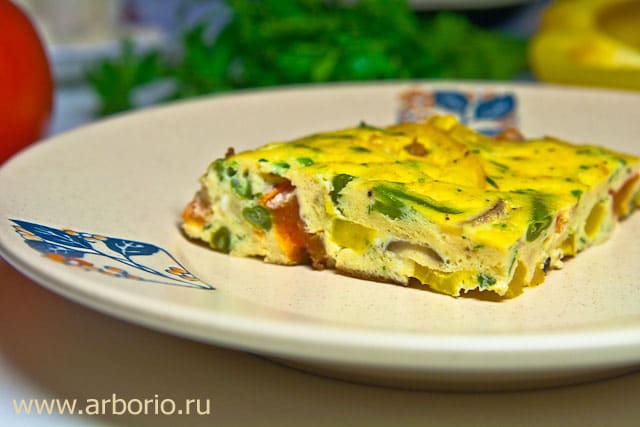Корейская кухня. Панчхан. Блюдо чон
9 шокирующих корейских блюд, способных проверить на прочность ваш желудок
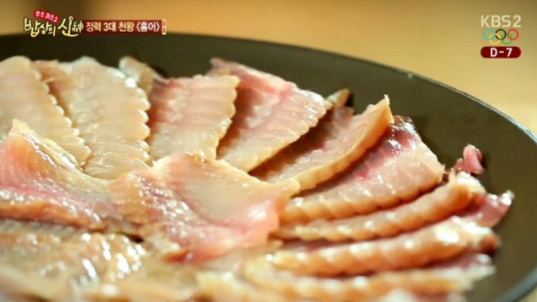
Когда мы знакомимся с разными странами и культурами, часто мы узнаем и о новых блюдах, которые в этих странах можно попробовать. Готовы ли вы узнать 9 самых шокирующих (или даже сумасшедших) блюд корейской кухни? Перед прочтением убедитесь, что ваша нервная система достаточна сильна. Также не рекомендуем вам принимать пищу за чтением этой статьи.
Жареная свиная кожа
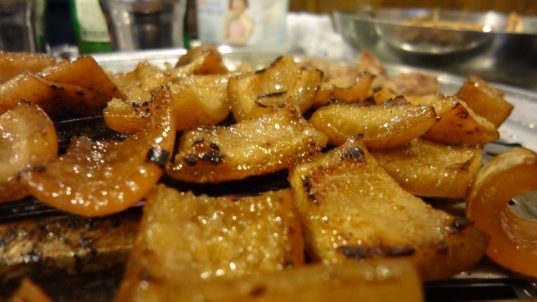
Это на самом деле деликатес и славится он тем, что полезен для красоты кожи благодаря высокому содержанию в нем коллагена. Не обманывайтесь, пробуя его, вы будете жевать только свиную кожу и жир. Никакого намека на тонкую прослойку мяса тут нет.
Куриные пальчики
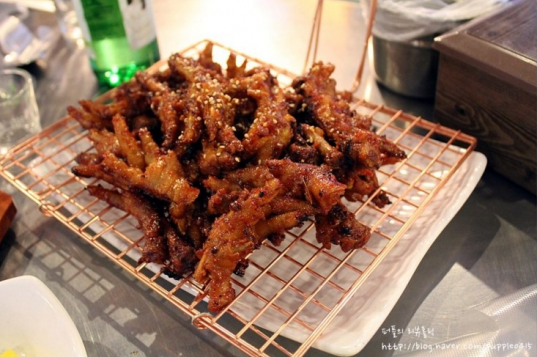
Куриные ноги, а именно пальцы курицы, на самом деле очень популярное угощение в многих странах. Исключением не стали Корея, Китай, Юго-восточная Азия и Северная Америка.
Сундэ — корейская кровяная колбаска

Это немного странная колбаса. Ее делают из таких вещей, которые вам бы никогда в голову не пришло собрать вместе. В основе этой колбасы кишки коровы или свиньи, фаршированные стеклянной лапшой, ячмень и кровь, а также в зависимости от вида колбасы, туда добавляют какие-либо дополнительные ингредиенты. Надо сказать, что это самая повседневная еда в нашем списке. Такую колбаску продают на улицах практически на каждом углу. К ней вы можете купить рисовую лепешку с печенью.
Внутренности коров/свиней/ягнят
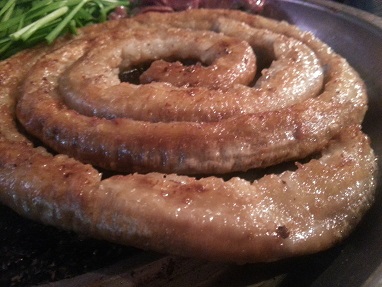
Вкусно звучит? А выглядит еще лучше!
В рамках этого блюда есть три разных вида угощения. Это gopchang (тонкий кишечник, картинку вы видите выше), daechang (толстая кишка, выглядит также как тонкий кишечник, но побольше), makchang (часть свиного желудка, на фото внизу).
В сыром виде
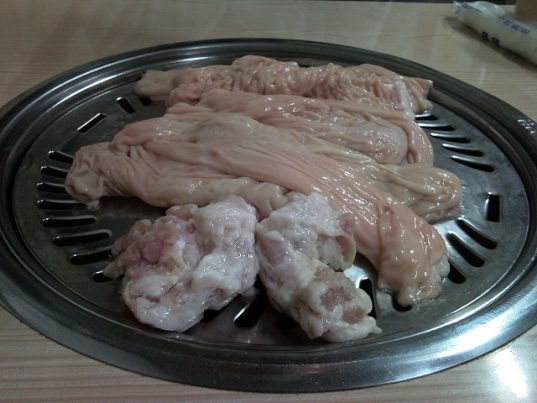
Свежеприготовленная
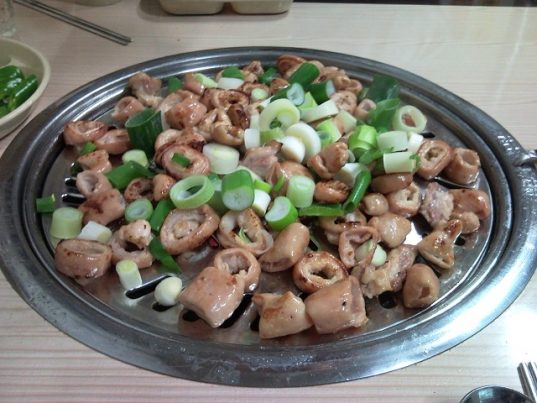
Живой осьминог
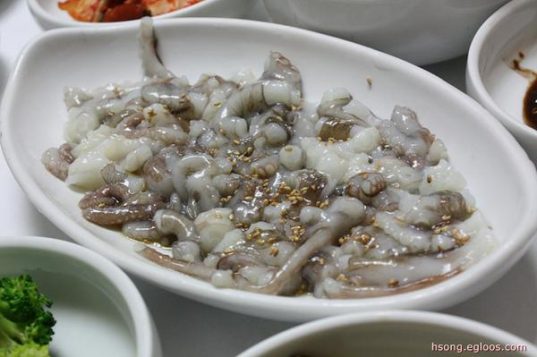
Нам кажется, сырой осьминог имеет самый душещипательный вид, он шевелится. Угощение, которое действительно может шокировать кого угодно. Убедитесь сами на второй минуте видео!
Такое блюдо требуется полить соусом и жевать очень тщательно, чтобы присоски на щупальцах не смогли присосаться к горлу или языку.
Бычий кровяной суп

Это блюдо частенько едят те, кто накануне перестарался с алкоголем. Также этот суп может стать частью простого рагу, которое люди едят, потому что им нравится его вкус. Но некоторые предпочтут отказаться от такого угощения.
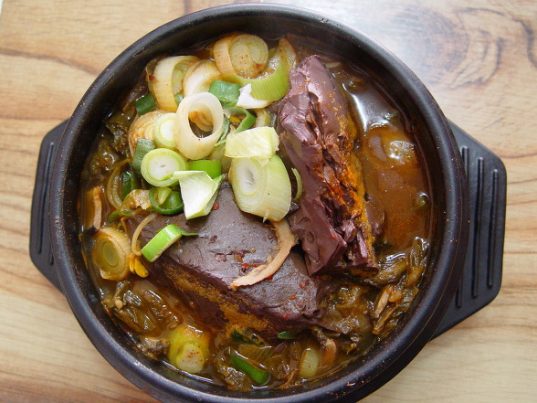
Личинки шелкопряда
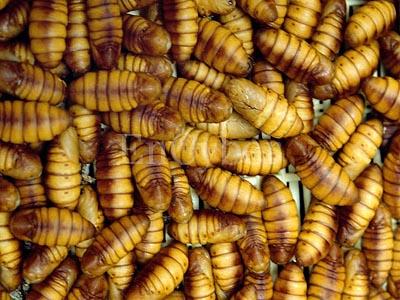
Тут комментарии излишни. Скажите «ням-ням» и просто посмотрите на это.
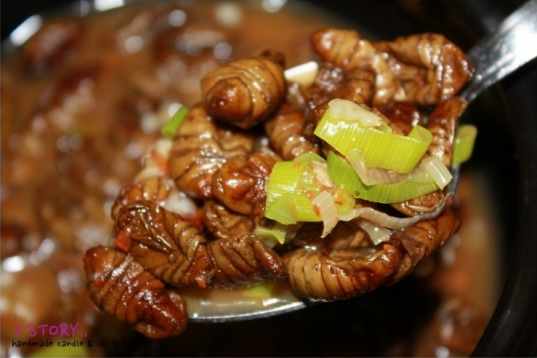
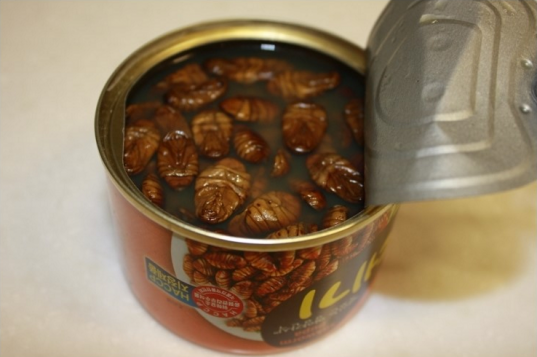
Ферментированный скат
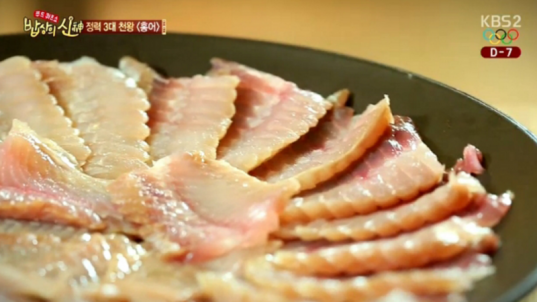
Выглядит не так ужасно, правда? Да и в названии нет ничего страшного. Вы сразу вспомните маринованную рыбу или ферментированную маринованную кимчи. Но это не совсем тоже самое. Вы узнаете об этом, когда ощутите специфический запах блюда. Он будто кричит вам «Не ешь меня, это опасно для жизни!» Ибо фермент ската (мочевина) — практически живой аммиак. Именно он дает ощущение покалывания во рту, и когда вы его почувствуете, вы поймете, какова на вкус гнилая еда.
Живые морские черви
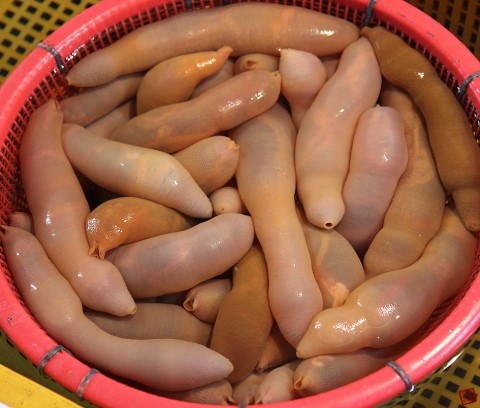
Это просто венец нашего списка омерзительных блюд. Возможно, вам станет чуть лучше, если вы узнаете, что героиня Чон Джи Хен из дорамы «Человек со звезды» любила это блюдо. Но вообще-то, это все же не реальный человек.

Gaebul также едят живыми. Их мелко нарезают, но они все же продолжают шевелиться на тарелке. Выглядят они еще ужаснее, чем живые осьминожки. Можете сами убедиться, взглянув на видео.
Источник:soompi.com
Перевод: Mrs. Zu© YesАsia
Если вы нашли ошибку, пожалуйста, выделите фрагмент текста и нажмите Ctrl+Enter.
www.yesasia.ru
Чон (блюдо) - WikiVisually
1. Хангыль – The Korean alphabet, known as Hangul in South Korea and as Chosŏngŭl/Chosŏn Muntcha in North Korea is the alphabet that has been used to write the Korean language since the 15th century. It was created during the Joseon Dynasty in 1443 by King Sejong the Great, in South Korea, Hangul is used primarily to write the Korean language as using Hanja in typical Korean writing had fallen out of common usage during the late 1990s. In its classical and modern forms, the alphabet has 19 consonant and 21 vowel letters, however, instead of being written sequentially like the letters of the Latin alphabet, Hangul letters are grouped into blocks, such as 한 han, each of which transcribes a syllable. That is, although the syllable 한 han may look like a single character, each syllabic block consists of two to six letters, including at least one consonant and one vowel. These blocks are arranged horizontally from left to right or vertically from top to bottom. Each Korean word consists of one or more syllables, hence one or more blocks, of the 11,172 possible Hangul syllables, the most frequent 256 have a cumulative frequency of 88. 2%, with the top 512, it reaches 99. 9%. The modern name Hangul was coined by Ju Sigyeong in 1912, han meant great in archaic Korean, and geul is the native Korean word for script. Taken together, then, the meaning is great script, as the word han had also become one way of indicating Korea as a whole the name could also potentially be interpreted as Korean script. Korean 한글 is pronounced, and in English as /ˈhɑːn. ɡʊl/ or /ˈhɑːŋɡʊl/, when used as an English word, it is often rendered without the diacritics, hangul, and it is often capitalized as Hangul, as it appears in many English dictionaries. Hankul in the Yale romanization, a system recommended for technical linguistic studies, North Koreans call it Chosŏngŭl, after Chosŏn, the North Korean name for Korea. Because of objections to the names Hangeul, Chosŏngŭl, and urigeul by Koreans in China, until the early 20th century, Hangul was denigrated as vulgar by the literate elite, who preferred the traditional hanja writing system. They gave it such names as these, Achimgeul, in the original Hanja, it is rendered as 故智者不終朝而會,愚者可浹旬而學。 Gugmun Eonmun Amgeul. Am is a prefix that signifies a noun is feminine Ahaetgeul or Ahaegeul Hangul was promulgated by Sejong the Great, the Hall of Worthies, a group of scholars who worked with Sejong to develop and refine the new alphabet, is often credited for the work. The project was completed in late December 1443 or January 1444, the publication date of the Hunmin Jeong-eum, October 9, became Hangul Day in South Korea. Its North Korean equivalent, Chosongul Day, is on January 15, various speculations about the creation process were put to rest by the discovery in 1940 of the 1446 Hunmin Jeong-eum Haerye. This document explains the design of the consonant letters according to articulatory phonetics, to assuage this problem, King Sejong created the unique alphabet known as Hangul to promote literacy among the common people. However, it entered popular culture as Sejong had intended, being used especially by women, the late 16th century, however, saw a revival of Hangul, with gasa literature and later sijo flourishing. In the 17th century, Hangul novels became a major genre, by this point spelling had become quite irregular
2. Ханча – Hanja is the Korean name for Chinese characters. Borrowed from Chinese and incorporated into the Korean language with Korean pronunciation, hanja-mal or hanja-eo refers to words that can be written with hanja, and hanmun refers to Classical Chinese writing, although hanja is sometimes used loosely to encompass these other concepts. Because hanja never underwent major reform, they are almost entirely identical to traditional Chinese, only a small number of hanja characters are modified or unique to Korean. By contrast, many of the Chinese characters currently in use in Japan and Mainland China have been simplified, and contain fewer strokes than the corresponding hanja characters. Today, a working knowledge of Chinese characters is still important for anyone who wishes to study older texts. Learning a certain number of hanja is very helpful for understanding the etymology of Sino-Korean words, hanja are not used to write native Korean words, which are always rendered in hangul, and even words of Chinese origin—hanja-eo —are written with the hangul alphabet most of the time. A major motivation for the introduction of Chinese characters into Korea was the spread of Buddhism, the major Chinese text that introduced hanja to Koreans, however, was not a religious text but the Chinese text, Cheonjamun. One way of adapting hanja to write Korean in such systems was to represent native Korean grammatical particles, for example, Gugyeol uses the characters 爲尼 to transcribe the Korean word hăni, in modern Korean, that means does, and so. However, in Chinese, the characters are read as the expression wéi ní. This is an example of Gugyeol words where the radical is read in Korean for its meaning. Hanja was the means of writing Korean until King Sejong the Great promoted the invention of hangul in the 15th century. However, even after the invention of hangul, most Korean scholars continued to write in hanmun and it was not until the 20th century that hangul truly replaced hanja. Officially, hanja has not been used in North Korea since June 1949, additionally, many words borrowed from Chinese have been replaced in the North with native Korean words. However, there are a number of Chinese-borrowed words in widespread usage in the North. The replacement has been less total in South Korea where, although usage has declined over time, some remains in common usage in some contexts. Each hanja is composed of one of 214 radicals plus in most cases one or more additional elements, the vast majority of hanja use the additional elements to indicate the sound of the character, but a few hanja are purely pictographic, and some were formed in other ways. This dual meaning-sound reading of a character is called eumhun, the word or words used to denote the meaning are often—though hardly always—words of native Korean origin, and are sometimes archaic words no longer commonly used. South Korean primary schools abandoned the teaching of hanja in 1971 and it is taught in separate courses in South Korean high schools, separately from the normal Korean-language curriculum
3. Корейская кухня – Korean cuisine has evolved through centuries of social and political change. Korean cuisine is based on rice, vegetables, and meats. Traditional Korean meals are noted for the number of dishes that accompany steam-cooked short-grain rice. Kimchi is almost always served at every meal, commonly used ingredients include sesame oil, doenjang, soy sauce, salt, garlic, ginger, pepper flakes, gochujang and cabbage. Ingredients and dishes vary by province, many regional dishes have become national, and dishes that were once regional have proliferated in different variations across the country. Korean royal court cuisine once brought all of the regional specialties together for the royal family. Meals are regulated by Korean cultural etiquette, grains have been one of the most important staples of the Korean diet. Early myths of the foundations of various kingdoms in Korea center on grains, one foundation myth relates to Jumong, who received barley seeds from two doves sent by his mother after establishing the kingdom of Goguryeo. During the pre-modern era, grains such as barley and millet were the staples and were supplemented by wheat, sorghum. Rice is not a crop to Korea, and millet was likely the preferred grain before rice was cultivated. Rice became the grain of choice during the Three Kingdoms period, particularly in the Silla, rice was such an important commodity in Silla that it was used to pay taxes. The Sino-Korean word for tax is a character that uses the character for the rice plant. The preference for rice escalated into the Joseon period, when new methods of cultivation and new varieties emerged that would help increase production. As rice was prohibitively expensive when it first came to Korea, the grain was mixed with other grains to stretch the rice. White rice, which is rice with the bran removed, has been the form of rice since its introduction into the cuisine. The most traditional method of cooking the rice has been to cook it in a pot called a sot or musoe sot. This method of rice cookery dates back to at least the Goryeo period, the sot is still used today, much in the same manner as it was in the past centuries. Rice is used to make a number of items, outside of the bowl of plain white rice
4. Оладьи – In Britain, pancakes are often unleavened and resemble a crêpe. In North America, an agent is used. American pancakes are similar to Scotch pancakes or drop scones, archaeological evidence suggests that pancakes were probably the earliest and most widespread cereal food eaten in prehistoric societies. The pancakes shape and structure varies worldwide, a crêpe is a thin Breton pancake of French origin cooked on one or both sides in a special pan or crepe maker to achieve a lacelike network of fine bubbles. When potato is used as a portion of the batter. Commercially prepared pancake mixes are available in some countries, Pancakes serve a similar function to waffles. In Britain and the Commonwealth, they are associated with Shrove Tuesday, commonly known as Pancake Day, the Ancient Greeks made pancakes called τηγανίτης, ταγηνίτης or ταγηνίας, all words deriving from τάγηνον, frying pan. The earliest attested references to tagenias are in the works of the 5th-century BC poets Cratinus, tagenites were made with wheat flour, olive oil, honey, and curdled milk, and were served for breakfast. Another kind of pancake was σταιτίτης, from σταίτινος, of flour or dough of spelt, derived from σταῖς, athenaeus mentions, in his Deipnosophistae, staititas topped with honey, sesame, and cheese. The Middle English word pancake appears in English in the 15th century, the Ancient Romans called their fried concoctions alia dulcia, Latin for other sweets. These were much different from what are known as pancakes today, Pancakes in the Horn of Africa are known as injera. Injera is a yeast-risen flatbread with a unique, slightly spongy texture, traditionally, it is made out of teff flour and is a national dish in Ethiopia and Eritrea. Canjeero, also known as lahooh or lahoh, is a kind of flatbread eaten in Somalia. In Eritrea and Ethiopia, injera are usually served with one or more known as wat or with salads or with other injera. The right hand is used to small pieces from the injera to use to pick up. The injera under these stews soaks up juices and flavours and, after the stews, injera thus acts simultaneously as food, eating utensil and plate. When the tablecloth formed by the injera is finished, the meal is over, lahoh is a pancake-like bread originating in Somalia, Djibouti and Yemen. It is often eaten along with honey, ghee and tea, during lunch, lahoh is sometimes consumed with curry, soup or stew
5. Кляр – Batter is a liquid mixture of one or more flours made with ground grains or soaked grains that are ground. Batters are used to various foods. The word batter comes from the old French word battre which means to beat, many batters are made by combining dry flours with liquids such as water, milk or eggs. Batters can also be made by soaking grains in water and grinding them wet. Often a leavening agent such as baking powder is included to aerate and fluff up the batter as it cooks, carbonated water or another carbonated liquid such as beer may instead be used to aerate the batter in some recipes. The liquid mixture churned and frozen in order to ice cream is also referred to as batter. The viscosity of batter may range from heavy to thin. Heat is applied to the batter, usually by frying, baking or steaming, in order to cook the ingredients, batters may be sweet or savoury, often with either sugar or salt being added. Many other flavourings such as herbs, spices, fruits or vegetables may be added to the mixture, beer is a popular ingredient in batters used to coat foods before frying. One reason is that a batter can be made from merely flour, beer. The purpose of using beer is so the bubbles in the beer will add body, depending on the type and quality of the beer, beer may also add colour or some flavour to the batter. The practice of beer battering is popular in Australia, New Zealand, some foods that are commonly beer battered and fried are fish, chips, and onion rings. Batters are used in many cuisines under many names, tempura in Japan, pakora in India, spoon bread in the USA, and many other examples are all types of batters. All batters work by forming a shell around the food, preventing scorching and retaining flavor. The ideal batter for fried foods is to be enough to adhere to the food. This ideal batter has been described poetically as being like a newlywed brides negligee, batters thicken with every second that passes after mixing because of the development of gluten. Strategies to reduce this effect include the use of ice water when mixing, alcohol, media related to Batter at Wikimedia Commons
6. Корейская придворная кухня – Korean royal court cuisine was the style of cookery within Korean cuisine traditionally consumed at the court of the Joseon Dynasty, which ruled Korea from 1392 to 1910. There has been a revival of this style in the 21st century. It is said that twelve dishes should be served along with rice and soup, collectively known as gungjung eumsik during the pre-modern era, the foods of the royal palace were reflective of the opulent nature of the past rulers of the Korean peninsula. Reflecting the regionalism of the kingdoms and bordering countries of the peninsula, the royalty had the finest regional delicacies sent to the palace. Although there are records of banquets pre-dating the Joseon period, the majority of these records note a vast variety of foods without mentioning the specific foods present, the meals cooked for the royal family were not seasonal, like a commoners meal. Instead, they varied significantly day to day, the eight provinces were represented each month in turn in the royal palace by ingredients presented by their governors. This gave the cooks a wide assortment of ingredients to utilize for royal meals, Food held a very important place in Joseon period. Official positions were created within the Six Ministries that were charged with all related to procurement and consumption of food. The Board of Personnel contained positions specific for attaining rice for the royal family, the Board of Rites were responsible for foods prepared for ancestor rites, attaining wines and other beverages, and medicinal foods. There were also hundreds of slaves and women who worked in the palace that had such as making tofu, liquor, tea. The women were the cooks to the palace and were of commoner or low-status families. These women would be split into specific skill sets or bureaus such as the Bureau of special foods or the Bureau of cooking foods and these female cooks may have been assisted by male cooks from outside the palace during larger banquets when necessary. Five meals were served in the royal palace each day during the Joseon period. Three of these meals would be full-course meals, while the afternoon, the first meal, mieumsang, was served at sunrise on days when the king and queen were not taking herbal medicines. The meal consisted of rice made with ingredients such as abalone, white rice, mushrooms, pine nuts. The side dishes could consist of kimchi, nabak kimchi, oysters, soy sauce, the porridge was thought to give vitality to the king and queen throughout the day. The sura were the main meals of the day, breakfast was served at ten in the morning and the evening meals were served between six and seven at night. The meals were set in the suragan, a room used for taking meals, with the king seated to the east
7. Закуска – An hors doeuvre, appetizer, or starter is a small dish served before a meal. Some hors doeuvres are served cold, others hot, Hors doeuvres may be served at the dinner table as a part of the meal, or they may be served before seating. Formerly, hors doeuvres were also served between courses, typically smaller than a main dish, it is often designed to be eaten by hand. Hors doeuvre in French means outside the work—that is, not part of the set of courses in a meal. Appetizer is a synonym for hors doeuvre, starter is sometimes used to denote an hors doeuvre, sometimes to denote more substantial courses, known in Europe and North America as entrées. A small number of historians believe that the tradition may have begun in Russia. However, it may be that the custom originated in China, possibly coming through Steppes, into Russia, Scandinavia, France, the tradition may have reached Italy, Greece and the Balkan nations through Russia or Persia. Many national customs are related, including the Swedish smörgåsbord, Russian zakuska, Lebanese mezze, during the Roman Period the meal practice was to have two main courses which were supplemented before the meal with small amounts of fish, vegetables, cheeses, olives and even stuffed dormice. These would be served at the start of the known as either gustatio or promulsis. The Greeks called the appetizer course propoma, during the Middle Ages formal French meals were served with entremets between the serving of plates. These secondary dishes could be either actual food dishes, or elaborate displays, in the 14th century, recipes for entremets were mostly made with meat, fish, pork and vegetables. Along with this came elaborate silver and ceramic table displays as well as pièces montées, the entremets were placed between the other dishes within the main work of the meal. At about this time in the 17th century, smaller dishes began to be served by being placed outside the work of symmetrically placed dishes. These were known as hors doeuvre, Hors doeuvres were originally served as a canapé of small toasted bread with a savoury topping before a meal. In the French publication Les plaisirs de la table, Edouard Nignon stated that hors doeuvres originated in Asia and he went on to state that the French considered hors-doeuvres to be superfluous to a well cooked meal. Service à la française continued in Europe until the early 19th century, after the 19th century the entremet would become almost exclusively a sweet dish or dessert with the British custom of the savoury being the only remaining tradition of the savoury entremet. The style of formal dining changed drastically in the 19th century, some traditional hors doeuvres would remain on the table throughout the meal. These included olives, nuts, celery and radishes, the changing, contemporary hors doeuvres, sometimes called dainty dishes became more complicated in preparation
8. Панчхан – Banchan refers to small dishes of food served along with cooked rice in Korean cuisine. This word is used both in the singular and plural, the basic table setting for a meal called bansang usually consists of bap, guk or tang, gochujang or ganjang, jjigae, and kimchi. According to the number of added, the table setting is called 3 cheop,5 cheop,7 cheop,9 cheop,12 cheop bansang. Banchan are set in the middle of the table to be shared, at the center of the table is the secondary main course, such as galbi or bulgogi, and a shared pot of jjigae. Bowls of cooked rice and guk are set individually, banchan are served in small portions, meant to be finished at each meal and are replenished during the meal if not enough. Usually, the more formal the meals are, the more banchan there will be, jeolla province is particularly famous for serving many different varieties of banchan in a single meal. Banchan is thought to be a result of Buddhist influence at around the mid-Three Kingdoms period, Kimchi is fermented vegetables, usually baechu, seasoned with chili peppers and salt. This is the essential banchan of a standard Korean meal, some Koreans do not consider a meal complete without kimchi. Kimchi can be made with vegetables as well, including scallions, gat. Namul refers to steamed, marinated, or stir-fried vegetables usually seasoned with oil, salt, vinegar, minced garlic, chopped green onions, dried chili peppers. Bokkeum is a dish stir-fried with sauce, Kimchi bokkeum - Stir-fried kimchi, often with pork. Jeyook bokkeum - Stir-fried pork with gochujang sauce and onions, ojingeochae bokkeum — Stir-fried dried shredded squid seasoned with a mixture of gochujang, garlic, and mullyeot. Nakji bokkeum - Stir-fried baby octopus in spicy gochujang sauce, buseot bokkeum - Stir-fried mushrooms such as pyogo, oyster mushrooms, pine mushrooms. Jorim is a dish simmered in a seasoned broth, dubu-jorim — Tofu simmered in diluted soy sauce, a little bit of sesame oil, minced garlic, and chopped green onion. Jang-jorim — Beef simmered in soy sauce, optionally with hard-boiled eggs or hard-boiled quail eggs, gyeran-jjim — Mixed and seasoned eggs steamed in a hot pot. Jeon denotes a variety of pan-fried, pancake-like dishes, pajeon — Thin pancakes with scallions. Kimchijeon — Thin pancakes with old Kimchi, saengseon-jeon — Small portions of fish coated with eggs and pan-fried. Donggeurang ttaeng — Patty made with tofu, meat and vegetables, coated with eggs, danmuji — A pickled radish marinated in a natural yellow dye made from gardenia fruit
9. Годовщина смерти – A death anniversary is the anniversary of the death of a person. There are also similar memorial services that are held at different intervals, although primarily a manifestation of ancestor worship, the tradition has also been associated with Confucianism and Buddhism or Hinduism. In Judaism, such commemorations are called yahrtzeit, celebration of mass in memory of a loved one on or near the anniversary of their death is also a part of Roman Catholic tradition. In China, an anniversary is called jìchén or jìrì. This type of ceremony dates back thousands of years in China, in Nepal and India, a death anniversary is known as shraadh. The first death anniversary is called a barsy, coming in Nepalese and Hindi, but in Bangladesh mainly Muslim peoples observe the day by praying for the soul of the deceased. Shraadh means to give with devotion or to offer ones respect, Shraadh is a ritual for expressing ones respectful feelings for the ancestors. According to Nepali and Indian texts, a soul has to wander about in the various worlds after death and has to suffer a lot due to past karmas, Shraadh is a means of alleviating this suffering. Shraddhyaa Kriyate Yaa Saa, Shraadh is the ritual accomplished to satiate ones ancestors, Shraadh is a private ceremony performed by the family members of the departed soul. Though not mandated spiritually, it is performed by the eldest son. It is also called Thidi Often there are prayer meetings. These occur one month before the one-year date, in Japan, a death anniversary is called meinichi, kishin, or kijitsu or kinichi. Monthly observances of a death are known as tsuki meinichi, while annual anniversaries are known as shōtsuki meinichi, in Korea, ancestor worship ceremonies are referred to by the generic term jerye. Notable examples of jerye include Munmyo jerye and Jongmyo jerye, which are performed each year for venerated Confucian scholars and kings of ancient times. The ceremony held on the anniversary of a members death is called gije. For such occasions, the women of the family traditionally prepare a set of dishes, including tteok, jeon, jeok. In Vietnam, an anniversary is called giỗ, ngày giỗ, đám giỗ. It is an occasion, at which members of an extended family gather together
10. Субпродукты – Offal /ˈɒfəl/, also called variety meats, pluck or organ meats, refers to the internal organs and entrails of a butchered animal. The word does not refer to a particular list of organs, which varies by culture and region. As an English mass noun, the term offal has no plural form, some cultures shy away from offal as food, while others use it as everyday food, or in delicacies. Certain offal dishes—including foie gras, pâté and sweetbread—are considered gourmet food in international cuisine, others remain part of traditional regional cuisine and may be consumed especially in connection with holidays. This includes Scottish haggis, Jewish chopped liver, U. S. chitterlings, intestines are traditionally used as casing for sausages. Depending on the context, offal may refer to parts of an animal carcass discarded after butchering or skinning, it may also refer to the by-products of milled grains. In earlier times, mobs sometimes threw offal and other rubbish at condemned criminals as a show of public disapproval. The word shares its etymology with several Germanic words, Frisian ôffal, German Abfall, afval in Dutch and Afrikaans, avfall in Norwegian and Swedish and these Germanic words all mean garbage or waste, or —literally— off-fall, referring to that which has fallen off during butchering. However, these words are not often used to refer to food with the exception of Afrikaans in the agglutination afvalvleis which does indeed mean offal, for instance, the German word for offal is Innereien meaning innards and the Swedish word is innanmat literally meaning inside-food. According to the Oxford English Dictionary, the word entered Middle English from Middle Dutch in the form afval, derived from af, the traditional Scottish haggis consists of sheep stomach stuffed with a boiled mix of liver, heart, lungs, rolled oats and other ingredients. In the English Midlands and South Wales, faggots are made from ground or minced pig offal, bread, herbs and onion wrapped in pigs caul fat. Brawn is a British English term for cheese, or the collection of meat and tissue found on an animals skull that is cooked, chilled. Luncheon tongue refers to reformed pork tongue pieces, ox tongue made from pressed complete tongue, is more expensive. Both kinds of tongue are found in tinned form and in slices in supermarkets, home cooking and pressing of tongue has become less common over the last fifty years. Bleached tripe was a dish in Northern England with many specialist tripe shops in industrial areas. Today, in South Lancashire certain markets may still sell tripe, Elder is the name given to cooked cows udder - another Lancashire offal dish rarely seen today. Offal connoiseurs such as Ben Greenwood OBE have frequently campaigned to bring Elder back on the menu of restaurants across Yorkshire and Lancashire, in Norway the smalahove is a traditional dish, usually eaten around and before Christmas time, made from a sheeps head. The skin and fleece of the head is torched, the brain removed, and the head is salted, sometimes smoked, the head is boiled for about 3 hours and served with mashed rutabaga/swede and potatoes
wikivisually.com
| Разнообразные чоны на блюде | |||||||
| Корея | |||||||
| хангыль: | 전, 전유어, 전유화, 저냐, 부침개, 지짐, 지짐개 | ||||||
| ханча: | 煎, 煎油魚, 煎油花, нет | ||||||
| |||||||
| хэмуль пхаджон, пхаджон с морепродуктами |
| — новая романизация: | pajeon |
| — Маккьюн —Райшауэр: | p'achǒn |
Пхаджон — тип чонов, где главным ингредиентом является зелёный лук Кроме него в пхаджон входит кляр из яиц, пшеничной муки, рисовой муки, а также дополнительные ингредиенты При их добавлении пхаджон относят к одному из видов: говяжий, свиной и так далее Пхаджон аналогичен китайскому блюду кунюбин англрусск, но менее плотный и не замешивается перед жаркой
Тоннэ пхаджон
Тоннэ пхаджон названы в честь Тоннэсун 동래성, крепости времён династии Чосон, на её месте находится одноимённый район Пусана Тоннэ была местом боевых сражений на протяжении Имджинской войны, и в легендах говорится, что люди Тоннэсуна, празднуя победу над японскими захватчиками, бросали в воздух зелёный лук; тонънэ пхаджон придумали в честь этой победы Кроме того, это блюдо подавали к королевскому столу, когда тунънэский рынок процветал в правление династии Чосон
Тоннэ пхаджон обычно готовится из кляра с рисовой мукой, клейкой рисовой мукой, яйцами и кочхуджаном В тесто добавляется зелёный лук, говядина, моллюски венерка, ondina modiola, устрицы и прочие морепродукты
Кимчхиджон
Кимчхиджон 김치전, НРК: gimchijeon; также кимчхи пучхимгэ, 김치부침개, произношение — kimtɕʰi dʑʌn — чон с кимчхи в мучном кляре с овощами или без них Кроме того, частым ингредиентом кимчхиджона является свинина При изготовлении кимчхиджона в кляр добавляется жидкость из кимчхи, она добавляет кляру цвета, но не острая сама по себе
Камджаджон
| Корея | |||||
| хангыль: | 감자전 | ||||
| ханча: | 감자煎 | ||||
| |||||
Камджаджон — чон из картофеля, поджаренного на масле Картофель появилмя в Корее в 1824 году, его привезли из Маньчжурии, но культивировать картофель стали только в провинции Канвондо, поэтому камджаджон стал местной кулинарной достопримечательностью Камджаджон традиционно готовится только из картофеля, соли и масла, но на практике в него добавляют морковь, репчатый или зелёный лук, грибы, чеснок, чтобы изменить цвет или фактуру блюда Камджаджон может быть подан со свежим зелёным и красным перцем чили, к нему подают соус чхоганджан 초간장, изготовленный из корейского соевого соуса и уксуса
Мемильджон
| Корея | |||||||
| хангыль: | 메밀전 | ||||||
| ханча: | 메밀煎 | ||||||
| |||||||
Мемильджон — чон из гречихи с овощами или кимчхи Это известное блюдо провинции Канвондо, где гречиха хорошо растёт даже в холодных горах Мемильджон готовят для особых случаев, например, чтобы положить на алтарь предков чеса англрусск «Фермерская ярмарка», организуемая в Пхёнчхане раз в пять дней, является местом оживлённой торговли мемильджоном
В кляр кроме гречишной муки иногда добавляют пшеничную или крахмал, чтобы добавить клейковины Традиционно тесто замешивают с помощью жёрнова, а кляр протирается через сито Затем тесто жарят на сковороде «содан» 소당, которая является также крышкой горшка сот 솥, на сковороду перед кляром выкладывают кимчхи и зелёный лук Кимчхи можно заменить на пекинскую капусту Мемильджон выпекают тонкими, так как толстые мемильджон считаются менее вкусными Мемильджон готовят на перилловом масле
Пинтток, кухня ЧеджудоМемильджон может быть ингредиентом других блюд, например, мемиль чхонтток 메밀총떡, вариант названия — мемиль-чонбён, 메밀전병 Это боюдо выглядит как ролл или вареник, начинка зависит от сезона и кулинарных традиций На Чеджудо имеется разновидность пинтток 빙떡, также чеджудо пиндэтток, его начинка — варёная дайконовая стружка В Канвондо пинтток начиняют чапчэ англрусск салат с лапшой, нашинкованной кимчхи, дайконом, зелёным луком, чесноком, свининой, кальмаром Их приправляют и поджаривают на сковороде В Пхёнчхане очень популярна полупрозрачная лапша из комбу чхонсачхэ 천사채 Такое блюдо считается хорошей закуской к пиву
Другие разновидности
Сэнсонджон- Мясные:
- юкчон 육전, 肉煎, с говяжьим фаршем,
- ванджаджон 완자전 небольшие шарики с говяжьим фаршем, тофу о овощами, покрытый мукой и яичным кляром,
- канджон 간전, с говяжьей печенью,
- чхонёпчон 처녑전, с частью желудка;
- с морепродуктами:
- сэнсонджон 생선전, 生鮮煎 с белой рыбой,
- хэмульджон 해물전, 海物煎 с рыбой, моллюсками, креветками и т п,
- миноджон 민어전, 民魚煎, с горбылём,
- тэгуджон 대구전 大口煎, с треской,
- кульчон 굴전, с устрицами,
- тэхаджон 대하전 大蝦煎, с креветочным мясом,
- сэуджон 새우전, с креветками;
- овощные и грибные:
-
- хобакчон 호박전, с тыквой,
- юнгынджон 연근전, с корнем лотоса,
- кочхуджон 고추전, с красным перцем,
- каджуджон 가지전, с баклажанами,
- тодокчон 더덕전, с кодонопсисом ланцетным codonopsis lanceolata,
- косариджон 고사리전, с папоротником-орляком,
- пхёгоджон 표고전, с шиитаке и говядиной
Примечания
- ↑ Yoon, Seoseok 윤서석 간납 Korean Mineumsa 1991 Архивировано 17 сентября 2012 года
- ↑ 1 2 кор Pajeon at Doosan Encyclopedia
- ↑ кор Dongnae Fortress at Doosan Encyclopedia
- ↑ кор Dongnae pajeon at Doosan Encyclopedia
- ↑ 1 2 кор Dongnae pajeon - Dongnae Pajeon Research Group, Dongnae-gu office
- ↑ koreanyoricomcokr 26 김치전 anakiianakiinet Проверено 10 сентября 2010 Архивировано 17 сентября 2012 года
- ↑ 1 2 кор Gamjajeon at Doosan Encyclopedia
- ↑ Jo Min-jeong 조민정 강원도식 감자전 Korean Patzzi / Lemontree Проверено 2 сентября 2008 Архивировано 17 сентября 2012 года
- ↑ 감자전 Korean The Chosun Ilbo Проверено 2 сентября 2008 Архивировано 17 сентября 2012 года
- ↑ 1 2 3 4 5 Lee Cheol-won 이철원 메밀부치기 빠지면 차례상 아이래요 Korean, Ohmynews 6 октября 2006
- ↑ Han Chi-ho 한지호 홍천 '메밀마을' Korean недоступная ссылка — история Nate Архивировано 14 июля 2011 года
- ↑ 평창시장평창5일장 Korean недоступная ссылка — история Korea Tourism Organization
- ↑ 메밀전 Korean 디지털강릉문화대전 Архивировано 17 сентября 2012 года
- ↑ Copeland Marks Cheju-do Bindaedoek // The Korean Kitchen: Classic Recipes from the Land of the Morning Calm — Chronicle Books, 1999 — P 90p — ISBN 0811822338
- ↑ 메밀전병 Korean, Doosan Encyclopedia
- ↑ 천사채 Korean, Doosan Encyclopedia
- ↑ Chung, Soon Yung Korean Home Cooking — Tuttle Publishing, 2001 — P 65p — ISBN 0794650066
- Amy Chae 정월초하루, 설날음식 소개 Korean недоступная ссылка — история wa21cokr Проверено 19 февраля 2008 Архивировано 14 февраля 2009 года
- Korean Food Culture Series - Part 1, Korean Food Korean Tourism Organization Проверено 19 февраля 2008 Архивировано 16 мая 2012 года
- Jeon 전 煎 Korean Empas / EncyKorea Проверено 19 февраля 2008
Чон (блюдо) Информация о
Чон (блюдо)Чон (блюдо) Чон (блюдо) Просмотр темы.Чон (блюдо) что, Чон (блюдо) кто, Чон (блюдо) объяснение
There are excerpts from wikipedia on this article and video
www.turkaramamotoru.com
Корейская кухня. Панчхан. Разное от Корейская кухня
p. Панчхан (банчхан, панчан, банчан). Этот термин употребляется для обозначения целого набора закусок и всевозможных салатов. В Корее панчхан принято подавать на небольших тарелках в качестве аккомпанемента к рису или другому основному блюду.
Слово используется как в единственном числе (обозначение одного вида закуски), так и во множественном. Один из самых известных корейских панчханов — кимчхи.
Панчхан сервируют вдоль всего стола, по центру, чтобы каждый мог свободно дотянуться до блюда, так как все панчханы принято есть сообща, также как и основное блюдо (кальби, пулькоги и так далее), в то время, как супы и рис подаются индивидуально каждому. Панчхан подается небольшими порциями, но постоянно пополняется во время застолья. Количество панчханов зависит от события, чем важнее событие, тем больше закусок. Количество и ассортимент закусок также зависит от провинции. Например, провинция Чолладо известна тем, что подает большое и разнообразное количество панчхан к каждому основному блюду.
Виды панчхана1. Кимчхи – квашеные овощи, которые заправляются искусно смешанным набором специй или просто острым красным перцем.1.1. Бэчу кимчхи – самое популярное кимчи, которое готовится из засоленной пекинской капусты с начинкой «со»1.2. Набак кимчхи – кимчхи из пекинской капусты. Кроме капусты в блюдо добавляют дайкон, а рассол делают не совсем острый.1.3. Котджори – готовят без предварительного засола овощей, поэтому готовое блюдо получается хрустящим и очень аппетитным. 1.4. Тонкимчхи – различные овощи в прозрачном рассоле. Набак кимчхи и тонкимчхи также имеют общее название муль кимчхи – «закуска в рассоле».1.5. Кактуги – закуска из квашенной редьки, нарезанной кубиками и заправленной острым красным перцем.1.6. Чхонгак кимчхи – дайкон, квашенный целиком с использованием острого красного перца. При подаче на стол дайкон разрезают вдоль на ломтики.1.7. Ёльму кимчхи – тонкие и небольшие ломтики молодого дайкона, заквашенные с помощью или без рыбного соуса.1.8. Кат кимчхи – готовится из листьев индийской горчицы. В блюдо добавляют большое количество острого красного перца, поэтому оно славится пряным вкусом и терпким запахом. Подается этот вид кимчхи с национальным соусом мёльчхиджот и клейкой рисовой пастой, что снижает горечь и терпкость листьев горчицы. 1.9. Ои собаги – огурцы, начиненные зелёным луком и приправленные острым красным перцем.1.10. Пха кимчхи – острое кимчхи из зелёного лука, приправленное большим количеством соуса из солёных анчоусов.

Бэчу кимчхи
2. Намуль – бланшированные, маринованные или слегка обжаренные овощи, заправленные кунжутным маслом, уксусом, давленным (либо мелко порубленным) чесноком. Часто с использованием острого красного перца и соевого соуса.2.1. Кхоннамуль – бланшированные соевые ростки (2-3 минуты), заправленные кунжутным маслом.2.2. Сигымчхи намуль – бланшированный шпинат, заправленый кунжутным маслом, чесноком и соевым соусом2.3. Миёк мучхим – нарезанные полосками листья морской капусты (ламинария), заправленные уксусом (сладким).2.4. Мусэнчхе мучхе – мелко нашинкованный дайкон в кисловатом соусе, иногда заправленный крупно молотым острым красным перцем.2.5. Косари намуль – засоленные молодые ростки папоротника. Перед приготовлением, папоротник бланшируется(иногда замачивается в воде, если он был засушен впрок), после чего обжаривается с говядиной, заправляется давленным чесноком, кунжутным маслом, соевым соусом и т. д.2.6. Чхви намуль – бланшированные листья растения семейства Астровых (англ. Aster scaber), вымоченные, а затем отжатые от воды заправляются соевым соусом, семенами кунжута, пастой из острого перца и кунжутным маслом. Листья также заготавливают впрок (сушат), поэтому существует вариант закуски из предварительно засушенных листьев, которые просто больше выдерживают в воде.2.7. Пирым намуль – бланшированные листья растения семейства Амарантовые последующей заправкой различными приправами.2.8. Нэнги намуль – бланшированные листья пастушьей сумки с приправами.2.9. Толь намуль – листья седума с острым перцем2.10. Когумасун намуль – отваренные и заправленные ростки батата.2.11. Каджи намуль – отварной баклажан, нарезанный дольками и заправленный соевым соусом, чесноком, кунжутным маслом.2.12. Тораджи намуль – нашинкованные корни, заправленные перцем, уксусом, семенами кунжута и кунжутным маслом. Существует вариант с предварительной тепловой обработкой: салат заправляется, после легкой обжарки на кунжутном масле.2.13. Сукджу намуль – бланшированные ростки маша, заправляются кунжутным маслом, соевым соусом, чесноком и перцем.2.14. Хобак намуль – кабачки, нарезанные кружочками или колясочками, в кляре. Существует также варианты: кабачки тушат или готовят с говядиной, соевым соусом, солеными креветками, чесноком и т.д.

Кхоннамуль
 Сигымчхи намуль
Сигымчхи намуль 3. Поккым – закуски с соусом, предполагающие легкую обжарку.3.1. Оджиночхе-поккым – закуска из обжаренной сушёной стружки кальмара, заправленной смесью из кочхуджана – острой пасты из красного перца, чеснока и особой приправы в виде сиропа мульёт.3.2. Джеюк-поккым – жареная свинина в соусе, с пастой кочхуджан и луком.3.3. Кимчхи-поккым – жареное кимчхи. Существует вариант обжарки кимчхи вместе со свининой.И другие

Кимчхи-поккым
4. Чорим – блюда, приготовленные путем длительного вываривания в бульоне со специями на медленном огне.4.1. Тубу-чорим – соевый творог тубу, приготовленный на медленном огне в разжиженном соевом соусе с кунжутным маслом, давленным чесноком и мелко порубленным зелёным луком4.2. Чан-чорим – говядина, вываренная в соевом соусе, с добавлением различных специй, иногда подается с яйцами, сваренными вкрутую. Говядина подаётся в виде мелкой стружки.4.3. Кходари-чорим – вываренный в соевом соусе минтайи другие

Тофу чорим
5. Ччим (Чим) – закуска, тушёная в горшочках до полного выпаривания воды.5.1. Кёран-ччим – яйца, взбитые и тушёные в горшочке, существует вариант с рыбной икрой. 5.2. Кальби-ччим – замаринованные в соевом соусе говяжьи рёбра, тушёные в керамическом горшке с различными овощами (картофелем, морковью, луком). Существуют другие варианты этой закуски, название которых варьируются в зависимости от главного продукта: баклажан, курица, рыба. Кроме того, существуют различные варианты из морепродуктов.

Кальби -ччим
6. Чон – разнообразные мучные изделия, приготовляемые на сковороде, по толщине либо как обычные блины, либо приближенные к оладьям c добавлением различных овощей. Также используется слово пуджимкэ, которое является синонимом слова чон.6.1. Самсэк-чон – термин, обозначающий блюдо с тремя различными видами корейских блинов, «блинное ассорти».6.2. Пхаджон – блины с зелёным луком. Существует вариант с яйцами.6.3. Кимчхи-чон – блины из муки и кимчхи длительной выдержки.6.4. Камджа-чон – корейский тип картофельных драников (potato pancakes).6.5. Сэнъсонджон – небольшие кусочки рыбы, жареной в кляре из смеси муки и яичной болтушки.6.6. Тонъгыранъттэн – лепёшка, сделанная из соевого творога, мяса, овощей и поджаренная в яичной болтушке

Кимчхи-чон
 Хэмуль пхаджон
Хэмуль пхаджон 7. Другие7.1. Чапчхэ — блюдо из прозрачной крахмальной лапши, с добавлением различных овощей, говядины, чеснока и соевого соуса.7.2. Камджа сэлоты – картофельное пюре из батата с добавлением кусочков яблока, моркови, иногда салат дополняют консервированной кукурузой

Чапчхэ
fanparty.ru






